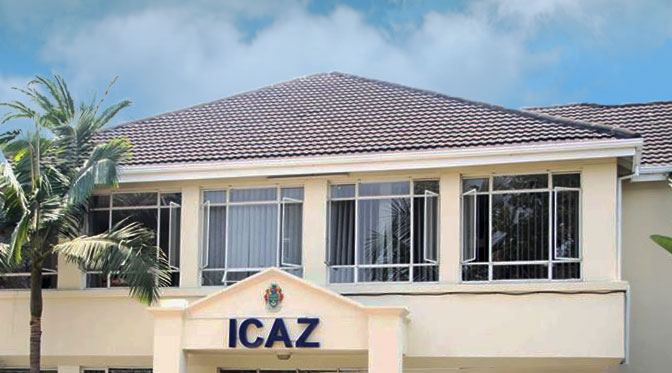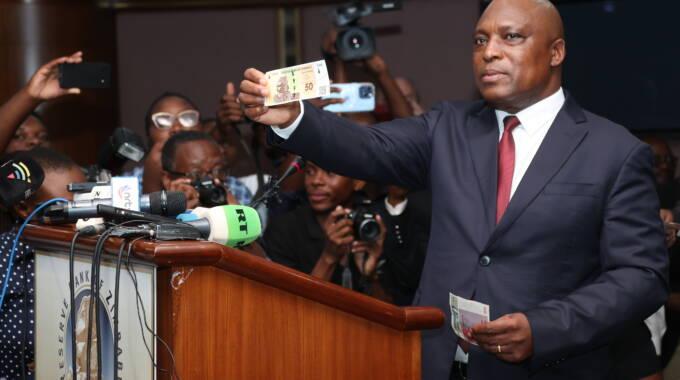ZiG strengthens daily during trades
The commercial banks through their dealings, reflected in the weighted average of these dealings which are the intermarket rates, have seen the new ZiG strengthen marginally against the US dollar, with the mid-rate on Wednesday this week being ZiG13,3437 to US$1, a strengthening of 1,6067 percent from the starting rate of ZiG13,5616.
In the eight days of trading to the Independence Day bank holiday the interbank mid-rate showed the ZiG strengthening each day and by Wednesday had reached ZiG13,3437, an accumulative strengthening of 1,6067 percent from the starting price.
But while the daily mid-rate showed a consistent strengthening of the ZiG, with the daily change ranging from 0,1370 percent to 0,3481 percent, there was more fluctuation in the bid rate (the rate banks pay for US dollars) and the ask rate (what banks sell those US dollars for).
And that also saw fluctuations in the margins banks charged between the two rates, their profit margin, which ranged from just under 5,13 percent to almost 7,36 percent in the first week, before settling down to just under 5,13 percent in the three trading days this week.
The banks started buying and selling US dollars in ZiGs from Monday last week, April 8, maintaining the starting rate as the mid-rate and on average offering ZiG13,2226 when buying US dollars and selling these dollars for ZiG13,9006. This gave them a margin of 5,1276 percent.
On Tuesday April 9, when more serious trading must have started, they slashed their bid price 1,2713 percent to ZIG13,0545 and shoved up their ask rate by 0,8237 percent to ZiG14,0151.
That raised their average margin to 7,3584 percent, a return to what some dealing room managers might well have considered a return to the “good old days”, although possibly there was acute variation in rates offered by each bank as they tested the market.
The mid-rate did however drop slightly by 0,1976 percent to ZiG13,5348 as the banks gouged the sellers of US dollars about 50 percent more than they gouged the buyers of these dollars.
But still there must have been a degree of concern all round, starting with the breaching of the ZiG14 dollar barrier for those who wanted to buy legal US dollars.
By Wednesday April 10 a bit more stability returned. The bid rate was pushed up 0,4274 percent to ZiG13,1103 and the ask rate was pushed down to ZiG13,8920 so sellers of dollars got a few more ZiG and buyers paid a little less. More importantly the banks had stepped back from that ZiG14 brink. The mid rate continued falling to 0,25 percent to 13,5012.
Average margins declined to 5,9625 percent, still on the high side but a lot better than the previous day.
There were still degrees of exploration on Thursday April 11 and Friday April 12. The bid rate first dropped 0,72 percent to ZiG13,0156 and then rose 0,51 percent to ZiG13.0824.
The corresponding ask rate rose marginally by 0,0058 percent to ZiG13,8928 on Thursday and then fell by more than 1 percent, 1,0048 percent to be precise, to ZiG13,7542 on Friday.
But the mid rate, because the rise in the ask rate was on the Thursday and the rise in the bid rate on the Friday, kept falling to ZiG13,4542 on the Thursday and ZiG13,4178 on the Friday.
The combination of the daily strengthening of the ZiG over all five days saw it ending the week 1,0603 percent stronger than the starting price for trading of ZiG13,5616 with the US dollar almost 15cents ZiG cheaper.
We assume the word “cent” will be used to term a hundredth of a ZiG, since we now need a word and this has yet to be given by the Reserve Bank of Zimbabwe.
The Thursday combination of a cheaper bid rate and more expensive ask rate saw the margin going up again to 6,74 percent on Thursday before moving down to the 5,13 percent which now appears to be the norm.
To be fair to the banks with their fluctuations in bid and ask rates, and corresponding fluctuations in margins, trading must have been on the lighter side in most banks last week as they were still modifying their systems with a couple of the larger banks coming in towards the end of the week.
This must have been highly frustrating to both customers and dealing rooms and some of the queries dealt with by IT managers must have been on the harsher side.
As an aside IT managers appear to be the most even-tempered senior staff in any organisation. “We are working on it” being the favourite expression, which Z tells the enquirer that they are looking at a screen with a keyboard in front of them, rather than breaking the tea drinking record. But still.
This week, with all banks functional, including the larger banks who tend to dominate the market and are usually more adverse to large swings one day and corrections the next day, the market was remarkably stable with very small daily declines in the average bid, ask and mid rates.
One Monday April 15 trading opened with average bid rates of ZiG13.0676 percent, a drop of 0,1131 percent from Friday, average ask rates falling to ZiG13,7378 an almost identical percentage drop of 0,1120 percent from Friday, and the mid rate strengthening to ZiG13,4027, a strengthening of 0,1125 percent. The margin was maintained at 5,13 percent.
Tuesday April 16 saw a bit more strengthening. The bid rate moved down 0,3030 percent to ZiG13,0280 and the ask rate by 0,3043 percent to ZiG!3,6960 , so the mid rate strengthened 0,3037 percent to ZiG13,3620, breaking the ZiG13,4 barrier in the right direction. Margins were the 5,13 percent on average.
Wednesday saw smaller changes but again strengthening. Bid rates fell 0,1366 percent to ZiG13,0102, ask rates fell 0,1373 percent to ZiG13,6772, and so the mid rate strengthened 0,1370 percent to ZiG13,3437.
While margins were pretty constant there is a tiny daily fall in the average, from 5,1287 on Monday to 5,1274 percent on Tuesday to 5,1267 percent on Wednesday.
Since we only get the weighted averages in the detailed Reserve Bank interbank statistics the fall in the margin could well be the result of closing alignment between the dealing rooms of the commercial banks.
Banks have to do the awesome calculations in their dealing rates early every morning to feed the numbers to the Reserve Bank, and are not supposed to consult.
We suspect that banks are in fact shooting for a 5 percent margin, and the slightly higher average margin recorded in the actual average bid and ask rates is the result of differences in each bank.
While 5 percent is a distinct improvement on what we have seen in the past, many might well consider it on the high side, with a little over 2 percent for example being more typical in South Africa. The growing impression of a high levels of stability in the ZiG to US dollar market suggests that banks need a lower risk factor in calculating their margins.
This could well become important over the next few days when the bid rate could fall below the ZiG13 point, and that psychologically might make sellers of US dollars twitch a bit and become slightly reluctant to sell. In theory while a chief financial officer should not regard a rate change from ZiG13,0001 to ZiG12,9999 as dramatic, accountants are still human despite some signs to the contrary.
So banks might well need to reduce margins for business purposes to maintain the inward flow of the willing sellers while everyone gets used to a gradually strengthening ZiG.
Shops are still legally allowed a 10 percent margin, but are adjusting. PicknPay, the largest and probably the most responsible, was using ZiG14 exactly on Wednesday, a margin of 4,9 percent.
Shops still want to attract US dollar buyers and so need to compete with the black market traders, to be precise the black market bid rate. But as the black market thinks margins of 25 percent between buy and sell rates are on the low side, with over 30 percent being more usual, PicknPay are offering at least the black market bid rate and for some dealers a bit more.
As we have noted the black market ask rate is not the “parallel rate” per se, and in many circumstances the black market bid rate is more critical, as shoppers have realised when they are approached outside a supermarket and find it simpler and easier to use their US dollars at the till, despite the change hassles, rather than sell them on the pavement. They do not lose and probably win.
In the end a retail rate close to the interbank ask rate is likely, as that is what a retailer has to pay their bank when they buy foreign currency so they will pay customers the same price.
The Reserve Bank is keen on a zero retail premium over the mid rate, but as an interim measure if the law is changed a modest 2,5 percent premium, the rough gap between interbank mid and ask rates, could ease the transition. But when the largest retailer more than halves the retail premium, the Reserve Bank should cheer at the progress.-ebusinessweekly










